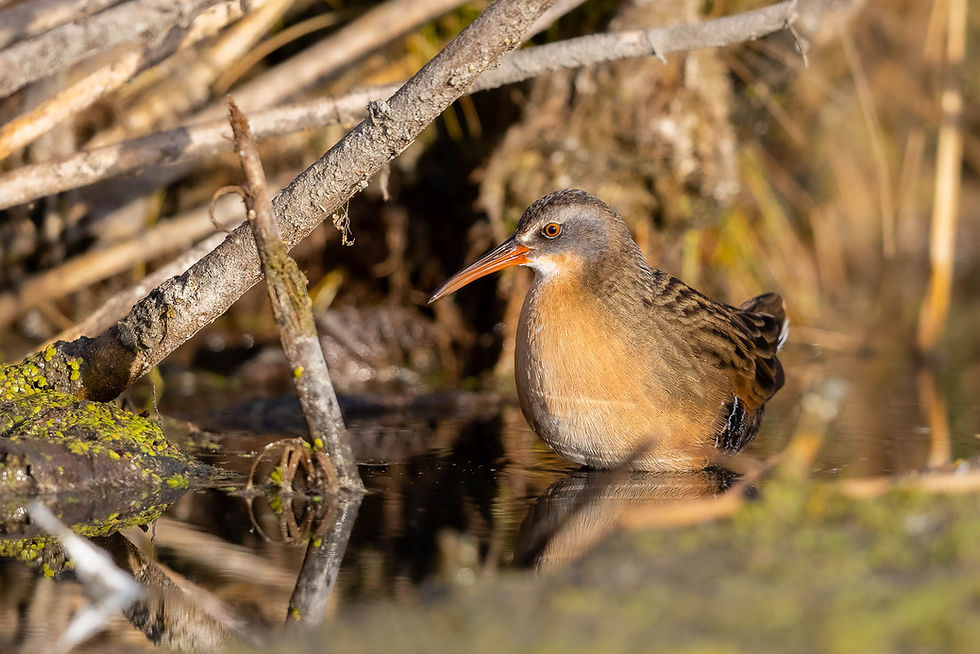Uganda: De-Nile
- Mike Timmons
- Sep 5, 2019
- 3 min read
Updated: Sep 12, 2019
August 2019
The Nile. The fabled river of Egypt. It seems like a mystical place that can only be experienced through books; to me, at least. Fast forward from a childhood spent in books and TV shows to, well... last month. After spending the night in Masindi, Uganda, we were up early the next day to start our trek up into Murchison National Park (you can read about the rest of our time in Murchison, here). Along the way, we stopped for a boat ride up the Nile River to Murchison Falls.
The falls are billed as the most powerful waterfall in the world. It's easy to believe. The river, called the Victoria Nile for this stretch, reaches the top of the falls where it is forced down to a 23 foot gap. There, the water practically leaps through the gap and falls 141 feet to the river below, where it flows toward Lake Albert. The river area is a magnet for wildlife, and we had a pretty awesome trip up to see the falls. The ride back down was a bit more questionable.
About halfway there, we hit some rain clouds. We got lucky and managed to dodge most of it. Thankfully, the boat had a canopy. We got to the falls and paused for a few shots.

If you look closely, you can see a group of people at the top of the falls. We did visit there the next day.

The trip back down river was a bit... well, something. Along our way up river, we passed the Nyamusika Cliffs. These are a set of clay cliffs where the Red-throated Bee-eaters nest. Like several other species of birds, these bee-eaters dig long holes into the ground (or cliff, in this case) where they raise their young. The cliffs were abandoned when we went by, and I was a bit disappointed. We were told that the birds had not returned for their nesting season yet, and that we were probably a little early to see any. On the way back down, we did see a Red-throated Bee-eater in a tree. And then we saw another. Two turned into several, and, by the time we got back to the cliffs, they were full of bee-eaters digging holes and just hanging out. It was a pretty cool experience.

Our next experience was not so cool. A small herd of elephants were feeding along the bank. Like many other times, our guide wheeled the boat towards them and then stopped a safe distance away while we took pictures.

We shot a few pictures, and then the driver backed the boat away. A little bit upstream, a large bull elephant was feeding on its own behind a large set of reeds. The driver aims the boat toward the reeds, cuts the engine, and lets the boat drift to a stop against the reeds... we are now about 20' away from a very large bull elephant. We are way too close. I cannot even really photograph the elephant. At 200mm, this is what I was getting.

I told the driver we were too close, and nothing changed. Then the elephant had enough of us. He steps back and charges around the set of reeds and starts flaring his ears at us. Now, our guide and I both are telling the driver to move the boat back. This is what I'm staring at.

The elephant is obviously unhappy. Our driver: gives it a minute, starts the engine, lowers the engine into the water, and then slowly backs away. The elephant was not the only one that was unhappy at this point.
We made it back to the dock without further incident. I'm still in shock that it even happened. Carmen's take is that the driver is out there every day and knows/understands the animals. My take is that the elephant is wild, and the driver put us in harms way.
In the end, we lived. We had a lot of luck, and we saw some really great things. If you go, just be sure to ask to skip the elephant experience.
Thanks for reading,
Mike





















































Comments